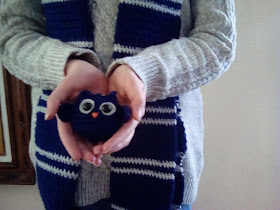Valentine's Day this week + a dystopian literature study in the works + all five books of
The Selection series being available from our online library (I adore
the online library) = one book review, as promised.
Happy Valentine's Day.
Books in the Series:
The Selection,
The Elite,
The One,
The Heir, and
The Crown (plus a handful of novellas, not reviewed here).
Author: Kiera Cass
Website:
www.kieracass.com
Summary: In the future, after war, occupation, and counter-revolution, North America has been rebuilt into a single country, with a population divided into a strict caste system under a monarch. Royal daughters marry foreign dignitaries to form or strengthen alliances. Royal sons marry commoners to unite the monarchy to the people. Girls from any caste can enter their names into a lottery to be drawn at random, one from each province, to compete for the affection of an eligible prince. Marriage to the prince means a raise in status to the highest caste. Competing for the honor raises the contestants to the third highest caste, provides a financial stipend to the girls' families, and increases even the losers' chances of marrying above their original status, thereby elevating their entire family. For thirty-five girls, it is the chance of a lifetime, except for those whose hearts are elsewhere.
Review:
The Selection series is most definitely a dystopian romance - with a capital R.
On a scale from one to ten for YA dystopian novels, if Orson Scot Card's
Ender's Game is on one end, with no romance at all, and Suzanne Collins'
Hunger Games, containing, but not completely driven by a love triangle, is in the middle, then Cass' series sits easily at the far end, as a YA romance in a dystopian setting.
That is not to say it doesn't contain a few unique, or thought provoking dystopian elements. It is, for instance, one of the few YA dystopian series I've come across that while set in a futuristic version of North America, still has some interaction with, and explanation of what's happening in the rest of the world. There is also some background given to explain how the world has changed to become the one in which the characters find themselves.
The first book is lively, well-paced and easily draws readers into the story, and along to the second book. Unfortunately the second book slows down, and starts to drag with the sameness of second season reality show-like predictability. The third book wraps up in a sudden, whizz-bang, world up-turning set of events that should leave the main characters shaken and emotionally scarred, but instead barely impacts them.
The interplay between the competing girls is fun in the first three books, if sometimes two-dimensional, and helps to fill out the characters more than in the last two books of the series (which are supposed to take place 20 years after the events of the third book), where the point of view changes from the "selected" to the one selecting - a princess for the first time. The change in point of view narrows and constricts character development. In the series' defense, I should add, that I read the first three books, but listened to the audio version of the last two, and did not care for the narrator (she came off as robotic and whiny to me), and that might be tainting my opinion.
Audience: 13-15 year old girls (my guess), and something I tried to keep in mind as I read the series.
Language: Multiple uses of d--n, h--l, and the misuse use of God's name.
Sexual Content: Flirtation and kissing for the most part, some "making-out", often in bedrooms, or bedroom-like settings, and once or twice involving some clothing being removed with a desire to take things further than it goes. Also, there are several instances of sneaking out of windows for clandestine, nighttime rendezvous, that are both against parental knowledge and rules as well as against the law. There is one homosexual relationship, with a passing mention of kisses between boys (in the very last book). There is also some talk of adultery, and illegitimate children.
Other Potential Negative Content: Parental abuse, liberal consumption of alcohol, violent punishment of major characters, death of a parent by heart-attack, the violent (not graphic) murder of several characters (including a couple of parents).
I would love to be able to recommend this series to you. I'm far from being in the target audience, but even with the silliness of the teen romance, I enjoyed Casss' light and easy writing style. The language, and sexual content though, will be enough to keep me from recommending it to my own daughters, or to you.
It's great to be a homeschooler.

















































